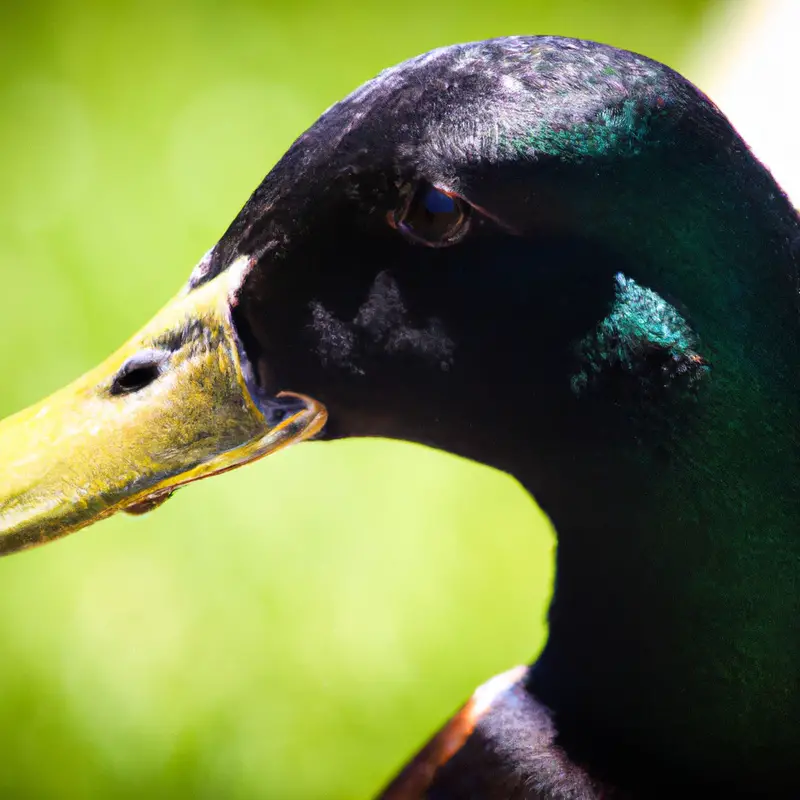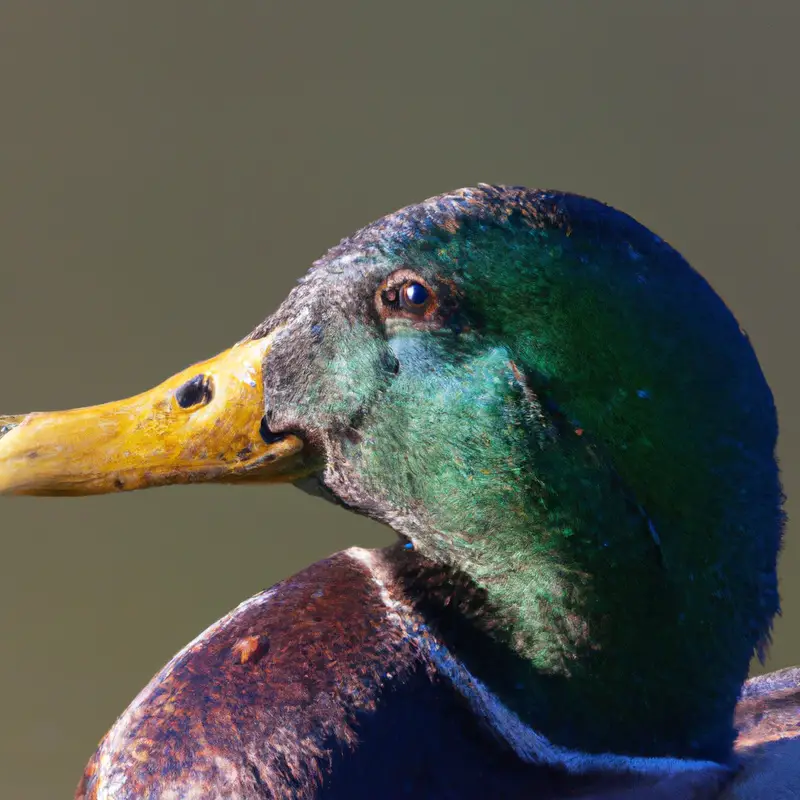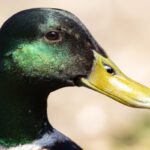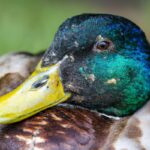Key Takeaways:
- Hunting mallard in Alaska offers a unique and exciting experience for waterfowl enthusiasts.
- Alaska provides excellent habitat for mallards, making it a prime location for hunting.
- Mallards in Alaska tend to be larger and hardier compared to those found in other areas.
- Hunters must adhere to regulations and guidelines to ensure sustainable hunting practices and preserve mallard populations.
Alaska, with its breathtaking landscapes and abundant wildlife, is a dream destination for outdoor enthusiasts and avid hunters.
And when it comes to waterfowl hunting, the Mallard is a prized target.
But let me tell you, hunting Mallard in Alaska is not for the faint of heart.
It requires skill, knowledge, and the right gear.
In this article, I’ll be your guide as we explore the equipment and techniques necessary to pursue these elusive birds.
From choosing the perfect shotgun to understanding their behavior and habitat, we’ll cover it all.
So grab your gear and join me on this thrilling Mallard hunting adventure in the stunning wilderness of Alaska!
Aspect | Benefits | Challenges |
|---|---|---|
Weather Conditions | Abundant ducks due to migration | Unpredictable and harsh weather |
Habitat | Varied and pristine landscapes | Difficult to navigate in remote areas |
Guided Hunts | Expert knowledge and support | Expensive and limited availability |
Trophy Potential | Opportunity to bag impressive ducks | Requires skill and patience |
Regulations | Sustainable hunting practices | Adherence to strict regulations |
Equipment and Gear for Mallard Hunting in Alaska
Choosing the Right Shotgun for Mallard Hunting
When it comes to mallard hunting, choosing the right shotgun is crucial. You want a firearm that is reliable and has the right amount of power to down these fast-flying birds.
Look for a shotgun with a gauge of 12 or 20, as these are the most effective for mallard hunting.
Additionally, consider the length of the barrel – a longer barrel can improve accuracy and range. Lastly, make sure the shotgun has a reliable choke option to control the spread of the shot.
By considering these factors, you can find the perfect shotgun for mallard hunting in Alaska.

Decoy Selection and Placement for Mallard Hunting
Decoy selection and placement are key factors in successful mallard hunting. Firstly, choose decoys that closely resemble mallards in size, color, and shape.
Consider using a mix of drakes and hens to create a realistic spread.
Place decoys strategically, mimicking natural mallard behavior. Start with a small group of decoys near your blind, gradually increasing the size and distance as you move away.
Position them in a way that simulates a landing or feeding flock.
Remember to adjust decoy spacing and patterns as needed to attract mallards. By paying attention to decoy selection and placement, you can increase your chances of a successful hunting experience.
Essential Clothing and Gear for Mallard Hunting in Alaska
When you’re gearing up for mallard hunting in Alaska, it’s important to have the right clothing and gear to ensure a successful and comfortable experience.
Here are the essentials you should consider:
- Camouflage clothing: Blend into your surroundings with camouflage patterns to avoid spooking the ducks. Opt for waterproof and insulated materials to stay dry and warm.
- Waders: Since you’ll be navigating wet marshes and streams, a good pair of waders is crucial. Look for durable and breathable waders that provide insulation and protection from the cold water.
- Waterproof boots: Keep your feet warm and dry with waterproof boots that have good traction to prevent slips and falls.
- Decoys: Invest in a set of mallard decoys to attract ducks. Consider realistic decoys that mimic the appearance of live ducks.
- Calls: Learn how to use mallard calls to mimic their sounds and lure them closer. A quality duck call can greatly improve your chances of success.
- Binoculars: Spotting incoming ducks from a distance is essential. A good pair of binoculars will help you identify potential targets and plan your shots accordingly.
- Shotgun and ammunition: Choose a shotgun that’s appropriate for waterfowl hunting, preferably with a 12-gauge shotgun and non-toxic ammunition complying with local regulations.
Remember to check local hunting regulations and prepare accordingly.
With the right clothing and gear, you’ll be well-equipped for a rewarding mallard hunting experience in Alaska.
Stay safe and enjoy your time in the field!
Techniques for Mallard Hunting in Alaska
Understanding Mallard Behavior and Habitat
Mallards, also known as wild ducks, are common waterfowl found in Alaska.
Understanding Mallard Behavior and Habitat can greatly improve your chances of a successful hunt.
Mallards prefer freshwater habitats, such as ponds, lakes, and marshes.
They are omnivorous and feed on aquatic vegetation, seeds, insects, and small invertebrates.
Mallards are social birds and often gather in flocks.
They are most active during early morning and late afternoon.
By observing their behavior and locating their preferred habitat, you can increase your chances of a successful mallard hunt.
Calling and Decoying Strategies for Mallard Hunting
Calling and decoying strategies are key elements for successful mallard hunting in Alaska. When it comes to calling, it’s important to use realistic mallard hen calls to attract the ducks.
Mimicking their feeding, comeback, or greeting sounds can increase your chances of luring them in.
Additionally, using decoys that resemble mallards will further enhance the effectiveness of your hunting setup. Place the decoys strategically to create a realistic scene and draw in the mallards.
Varying the positions, spacing, and amounts of decoys can provide a more enticing appearance.
Remember to adjust your calling and decoying strategies based on the specific hunting conditions and the behavior of the mallards you’re targeting.
Concealment and Blind Setup for Mallard Hunting
Concealment and blind setup are essential for successful mallard hunting in Alaska. To effectively hide from the keen eyes of these birds, choose a location with natural cover like tall grasses or shrubs.
Build a blind that blends in with the surroundings, using materials like vegetation, branches or natural camouflage netting.
Ensure your blind offers enough space for comfortable shooting and allows for good visibility. Position it strategically near a feeding area or flyway for a higher chance of success.
Remember to keep movement to a minimum and stay quiet to avoid spooking the mallards.
Safety Tips and Considerations
Importance of Safety in Mallard Hunting
The safety of hunters and those around them should always be a top priority when engaging in mallard hunting. Safety protocols and practices help prevent accidents and injuries.
It’s important to handle firearms responsibly, wear appropriate protective gear, and use proper hunting techniques.
Always be aware of your surroundings, communicate with your hunting party, and follow all hunting regulations. By prioritizing safety, you can have a successful and enjoyable mallard hunting experience while minimizing potential risks or dangers.

Weather Awareness and Preparation for Mallard Hunting
Weather awareness and preparation are essential for successful mallard hunting.
- Check the weather forecast before heading out to the hunting area. This will help you anticipate any changes in weather conditions.
- Dress appropriately for the current and expected weather conditions. Layer clothing, bring rain gear, and wear insulated boots to stay comfortable and dry.
- Be aware of wind direction and speed, as this can affect the flight patterns of mallards. Position yourself downwind to increase your chances of a successful hunt.
- Bring necessary equipment for different weather conditions, such as sunscreen for sunny days or hand warmers for colder temperatures.
- Stay informed about any potential weather hazards in the area, such as storms or strong winds. Adjust your plans accordingly to ensure your safety.
By staying aware of the weather and being prepared, you can have a safer and more enjoyable mallard hunting experience.

Navigation and Wilderness Safety for Mallard Hunting in Alaska
When hunting mallard in Alaska, navigation and wilderness safety are paramount. Ensure you are well-prepared with a topographic map and a compass or GPS device to navigate through the rugged terrain.
Familiarize yourself with the area and any potential hazards beforehand.
Dress appropriately for the weather and pack essential items such as a first aid kit, extra food and water, and emergency supplies. Always inform someone of your plans and expected return time.
Stay alert, watch for wildlife, and practice safe firearm handling.
Your safety is key while enjoying this exciting hunting experience.
Finding Mallard Hunting Locations in Alaska
Researching Public Hunting Areas for Mallard Hunting
When it comes to researching public hunting areas for mallard hunting, here are a few tips. Start by checking with your local wildlife management agency or the Alaska Department of Fish and Game for information on public hunting areas.
Online resources, such as hunting forums and websites, can also provide valuable insights and recommendations from experienced hunters.
Additionally, consider reaching out to local hunting clubs or fellow hunters for advice on prime mallard hunting spots. Remember to review any regulations or permit requirements before heading out to ensure a successful and legal hunt.
Guide Services and Private Land Access for Mallard Hunting
Guide services and private land access are two important factors to consider when embarking on a mallard hunting trip in Alaska. Hiring a knowledgeable guide can greatly enhance your chances of success, as they will have expertise in locating prime hunting areas and navigating the challenging terrain.
Additionally, securing private land access can provide exclusive access to waterfowl-rich habitats, increasing your odds of a productive hunt.
When planning your mallard hunting adventure, be sure to research reputable guide services and explore options for obtaining private land access to maximize your hunting experience.
Local Knowledge and Networking for Mallard Hunting Success
Local knowledge and networking are key factors for successful mallard hunting in Alaska.
- Tap into local knowledge: Talk to experienced hunters, join hunting forums, and reach out to local hunting organizations to gather information about prime hunting locations, weather conditions, and hunting regulations.
- Network with fellow hunters: Build connections with other hunters through hunting clubs, social media groups, or hunting events. They can provide valuable insights, share tips, and even invite you to their preferred hunting spots.
- Participate in hunting workshops and seminars: Attend workshops and seminars to learn from experts and gain a deeper understanding of mallard hunting techniques, scouting, decoy placement, and calling.
- Collaborate with local guides or outfitters: Working with local guides or outfitters can give you access to private hunting grounds and increase your chances of success.
- Respect local communities and wildlife: Remember to follow ethical hunting practices, respect local communities’ land and regulations, and prioritize the conservation of wildlife.
By leveraging local knowledge and building a strong network, you can enhance your mallard hunting experience in Alaska.
Field Dressing and Care of Mallard
Proper Field Dressing Techniques for Mallard
Proper field dressing technique is essential for preserving the quality of Mallard meat.
Start by plucking the feathers and removing the head.
Make an incision through the breastbone, ensuring not to pierce the entrails.
Reach inside to remove the organs, being careful to avoid puncturing the intestines.
Rinse the cavity with cold water and pat dry with paper towels.
Store the field-dressed Mallard immediately in a cool environment to prevent spoilage.
Following these steps will help you prepare your Mallard for cooking in the best possible way.
Storing and Cooking Mallard Meat
Storing and cooking Mallard meat is a key part of making the most out of your hunting experience.
To store the meat, wrap it tightly in plastic wrap or place it in an airtight container in the refrigerator for up to 3 days.
For longer storage, freeze the meat in freezer-safe bags or containers.
When it comes to cooking, Mallard meat is versatile.
You can grill, roast, or pan-fry it.
Just make sure to cook it to an internal temperature of 165°F (74°C) to ensure it’s safe to eat.
Experiment with different seasonings and recipes to find your favorite way to enjoy Mallard meat.
Legal Aspects of Transporting Mallard Meat from Alaska
Transporting Mallard Meat from Alaska has specific legal requirements. Here are some important aspects to keep in mind:
- Possession Limit: In Alaska, the possession limit for Mallard meat is three times the daily bag limit. Make sure you check the current state regulations for the specific limits in your area.
- Proper Packaging: When transporting Mallard meat, it must be properly field dressed, labeled, and packaged. This ensures that it can be easily identified and helps prevent any confusion or violation of transportation laws.
- Documentation: Carry all necessary permits or licenses required for hunting and transporting game meat. It’s important to have proper documentation to avoid any legal issues during transportation.
- Interstate Travel: If you plan to transport Mallard meat across state lines, be aware that each state may have its own regulations and restrictions. Familiarize yourself with these regulations before you travel.
- Commercial Transportation: If you are using a commercial carrier or shipping service, check with them beforehand to ensure they allow the transportation of game meat and are familiar with the necessary legal requirements.
Remember to always follow the laws and regulations regarding the transportation of Mallard meat to ensure a smooth and legal process.
Frequently Asked Questions (FAQs)
Are there specific bag limits for Mallard hunting in Alaska?
In Alaska, there are specific bag limits for Mallard hunting. The bag limit for Mallards is currently four per day, with a possession limit of eight.
These limits are set in place to ensure the sustainability and conservation of the Mallard population in the state.
It’s important to be aware of and adhere to these regulations to maintain the balance of wildlife and preserve the hunting experience for future generations.
What are the common challenges in Mallard hunting in Alaska?
Mallard hunting in Alaska comes with its own set of challenges.
The common challenges hunters face include:
- Harsh weather conditions: Alaska’s extreme weather, including frigid temperatures and heavy snowfall, can make hunting difficult and uncomfortable.
- Remote locations: Mallards often migrate to remote areas of Alaska, requiring hunters to travel long distances and navigate challenging terrain.
- Limited visibility: Thick vegetation and terrain can hinder visibility, making it harder to spot and target mallards.
- Hunting regulations: Alaska has specific hunting regulations and bag limits for waterfowl, including mallards. It’s crucial to be aware of and adhere to these regulations.
- Competition from other hunters: The popularity of mallard hunting in Alaska can lead to crowded hunting spots, increasing competition for limited game.
To overcome these challenges, preparation is key.
Research the hunting area, monitor weather conditions, dress appropriately, and ensure you have the necessary gear and licenses.
Being adaptable and patient will enhance your chances of a successful mallard hunt in Alaska.
Can non-residents hunt Mallards in Alaska?
Yes, non-residents can hunt Mallards in Alaska. The state offers hunting opportunities for both residents and non-residents, including waterfowl species like Mallards.
However, it’s important to note that non-residents may need to obtain the necessary licenses and permits to legally hunt in Alaska.
Make sure to check the specific regulations and requirements set by the Alaska Department of Fish and Game before planning your Mallard hunting trip. Enjoy your time in the beautiful Alaskan wilderness!
Final Verdict
Hunting Mallards in Alaska can be an exhilarating and rewarding experience for outdoor enthusiasts.
By equipping yourself with the right shotgun, decoys, and clothing, understanding Mallard behavior and habitat, and implementing effective calling and decoying strategies, you can increase your chances of a successful hunt.
Additionally, prioritizing safety, researching hunting locations, and properly field dressing and caring for your Mallards are crucial aspects to consider.
Whether you are a resident or non-resident, the beauty and challenges of Mallard hunting in Alaska await.
Happy hunting!








